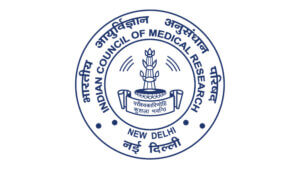The Indian Council of Medical Research (ICMR), the apex health research body, has highlighted the importance of carefully reading food labels on packaged items. They warn about Misleading Packaged Food labels, and consumers must make informed and healthy choices by thoroughly reviewing the provided information.
The ICMR, in its recently released dietary guidelines, stated that health claims on packaged food are strategically arranged to attract consumers’ attention and convince them of the product’s healthiness.
On Wednesday, the dietary guidelines for Indians, issued by the National Institute of Nutrition (NIN) based in Hyderabad, stated that despite the strict regulations set by the Food Safety and Standard Authority of India (FSSAI), the information provided on food labels may still be misleading.
The NIN provided examples to illustrate that a food item can be supposed ‘natural’ if it lacks added colors, flavors, or artificial substances and undergoes minimal processing.
The term is frequently used roughly, particularly by manufacturers who may only highlight a couple of natural ingredients in their products. This practice can be deceptive. Therefore, it is advised to carefully read the label, paying close attention to the ingredients and other details, to verify the claims.
For example, regarding the claim of ‘real fruit or fruit juice’. According to the FSSAI regulation, if a food item contains a small amount, such as fruit juices with only 10% or less fruit added, it is permissible to label the product as being made with real fruit pulp or juice. The product that claims to contain real fruit may have added sugar and other additives, with only 10% real fruit pulp.
If a food label indicates ‘organic’, it signifies that the product does not contain any artificial preservatives, flavors, or colors. Additionally, the ingredients used in the food are free from pesticides and chemical fertilizers. Only when both of these criteria are fulfilled can the label state that the product is 100% organic and display the approved ‘Jaivik Bharat’ logo by the FSSAI.
Regarding the phrase ‘Made with the whole grain’, it has been pointed out that these words may be wrong. This statement does not guarantee that the food products are not tertiary or ultra-processed.
Additionally, the NIN stated that individuals commonly link sugar-free products with reduced calorie content and view them as advantageous for diabetics and those trying to manage their weight. However, sugar-free foods can contain excessive amounts of fats, refined cereals (such as white flour and starch), and even hidden sugars (such as maltitol, fructose, corn syrup, and molasses). Consequently, these ingredients contribute to a high glycemic index and calorie count in the food item.
While FSSAI regulates nutrition and health claims, consumers should be careful and verify these claims by referring to the ingredients and nutrition information provided on the label, as suggested by the recommended guidelines. The guidelines further highlight that manufacturers may sometimes make inaccurate or insufficient claims about their food products through labeling.

Many people mistakenly believe that ‘nutrition facts’ and ‘nutrition/nutrient claims’ are replacable. However, nutrition claims refer to statements that indicate or imply specific nutritional properties of food.
On the label, below the “nutrition facts” section, there is a declaration regarding the “serving size.” This is an important piece of information on the label, as all the nutrition details provided are based on this specified serving size, as outlined in the guidelines.
The serving size on the label may be expressed in various ways, such as grams, cups, scoops, or pieces, depending on the food item. Grams are typically the most frequently listed measure, even if the serving size is also provided in a different unit.
Statements such as ‘low calorie’, ‘high fiber’, ‘low fat’, or ‘low sodium’ are not sufficient information. It is necessary to back up these claims by providing the specific values or nutritional facts of the product.
The guidelines also suggest that the “date of manufacture” and “use-by date” are important indicators of the product’s quality and safety. Consuming the product beyond these dates could increase the risk of food poisoning.
The guidelines also recommended checking the net weight of the packet, which is the total amount of product inside. While nutrition facts are typically based on one serving per 100g/100ml, some packages may have multiple servings or more than 100g/100ml.
The statement suggests evaluating the number of servings per ml/g compared to the serving unit used to present nutrition facts. It advises assessing the calories and other nutrients in the portion based on the quantity of the food item being used.
A multidisciplinary committee of experts, headed by Dr. Hemalatha R, Director of ICMR-NIN, has drafted the Dietary Guidelines for Indians (DGIs). These guidelines have undergone numerous scientific reviews.
Date : 18 May 2023 Time : 10 AM to 05 PM Faculty : Asmita Thaokar (FSSAI National Level Resource Person)
To get regular Food Industry updates, feel free to join our WhatsApp group: Joining link
Share this NEWS with all your Food Technologist Friends and colleagues.